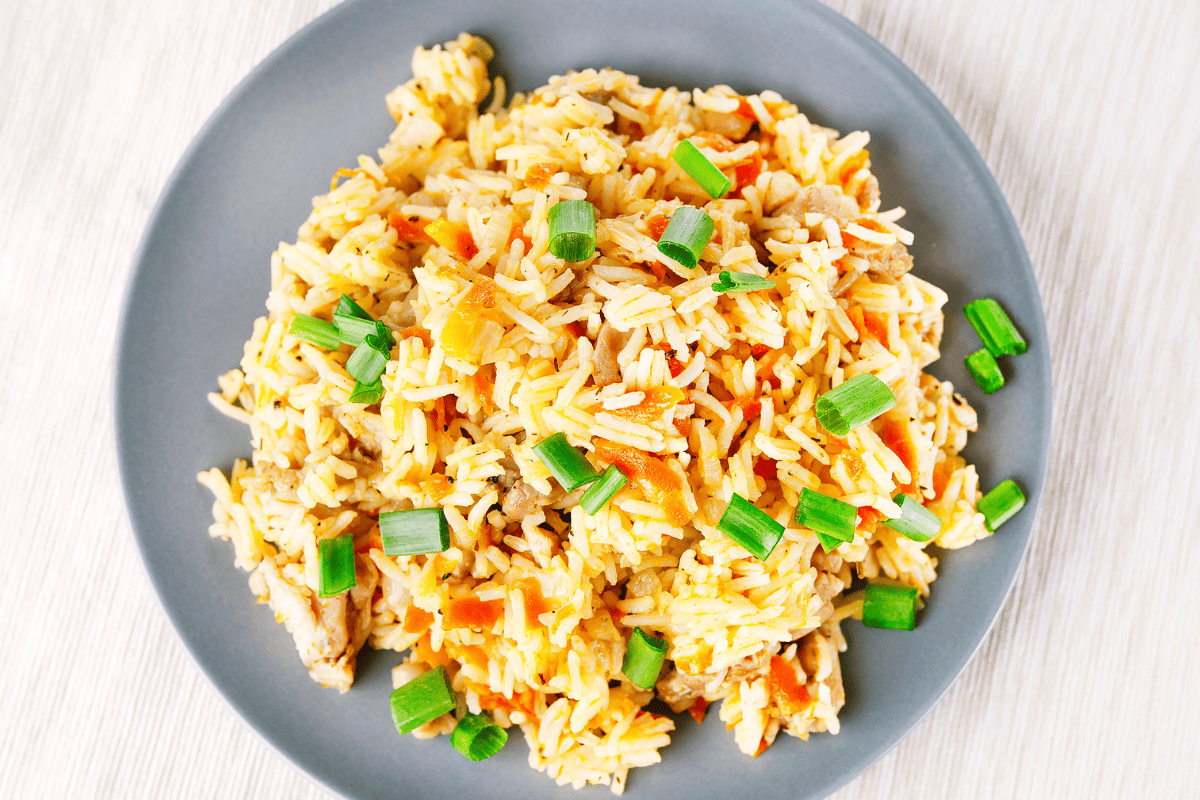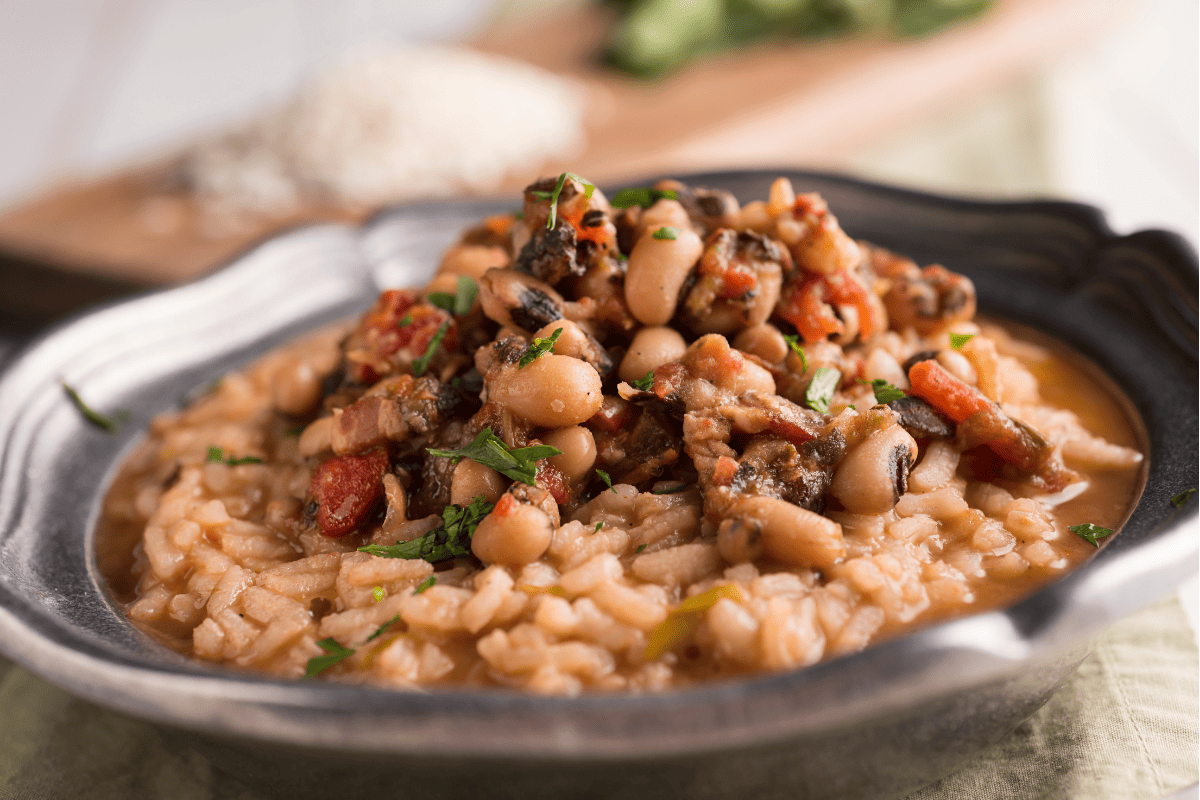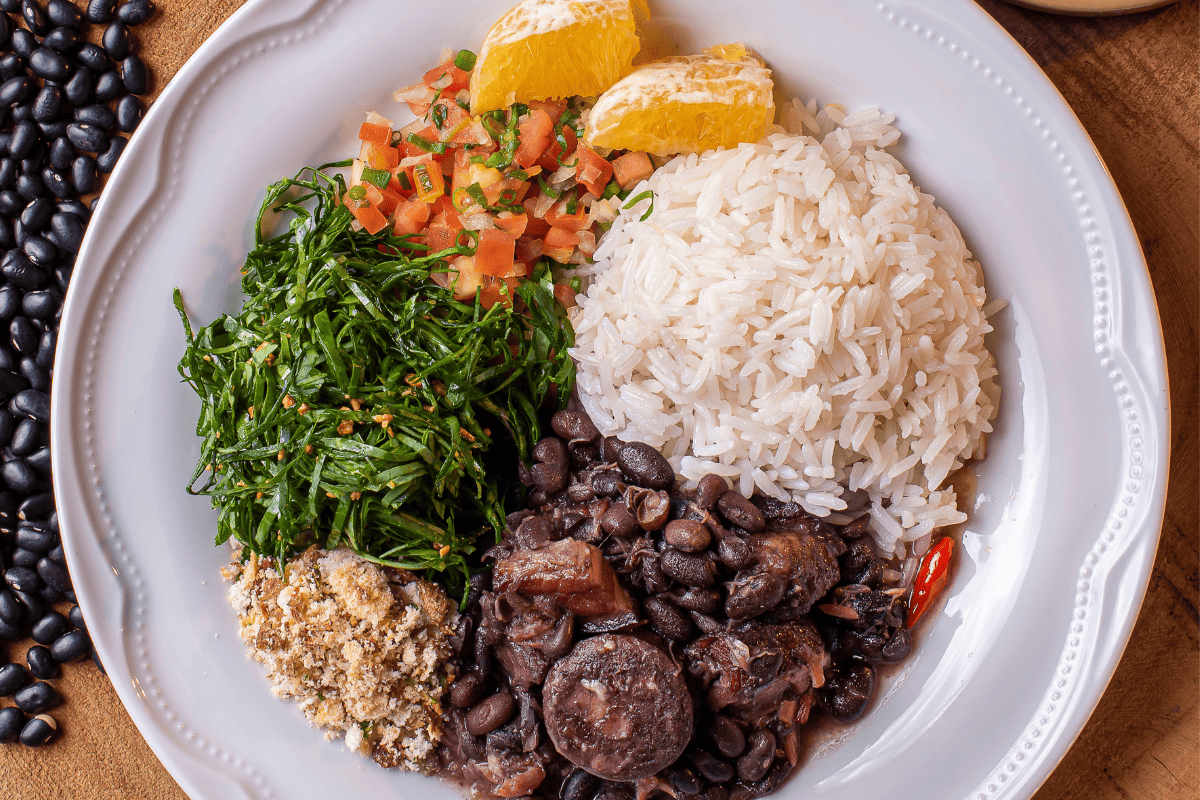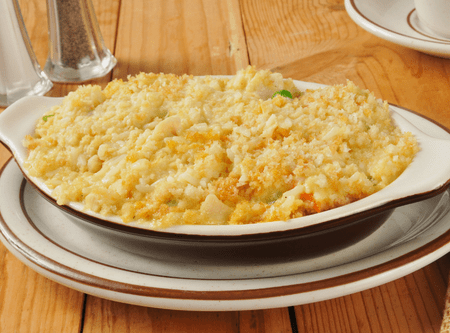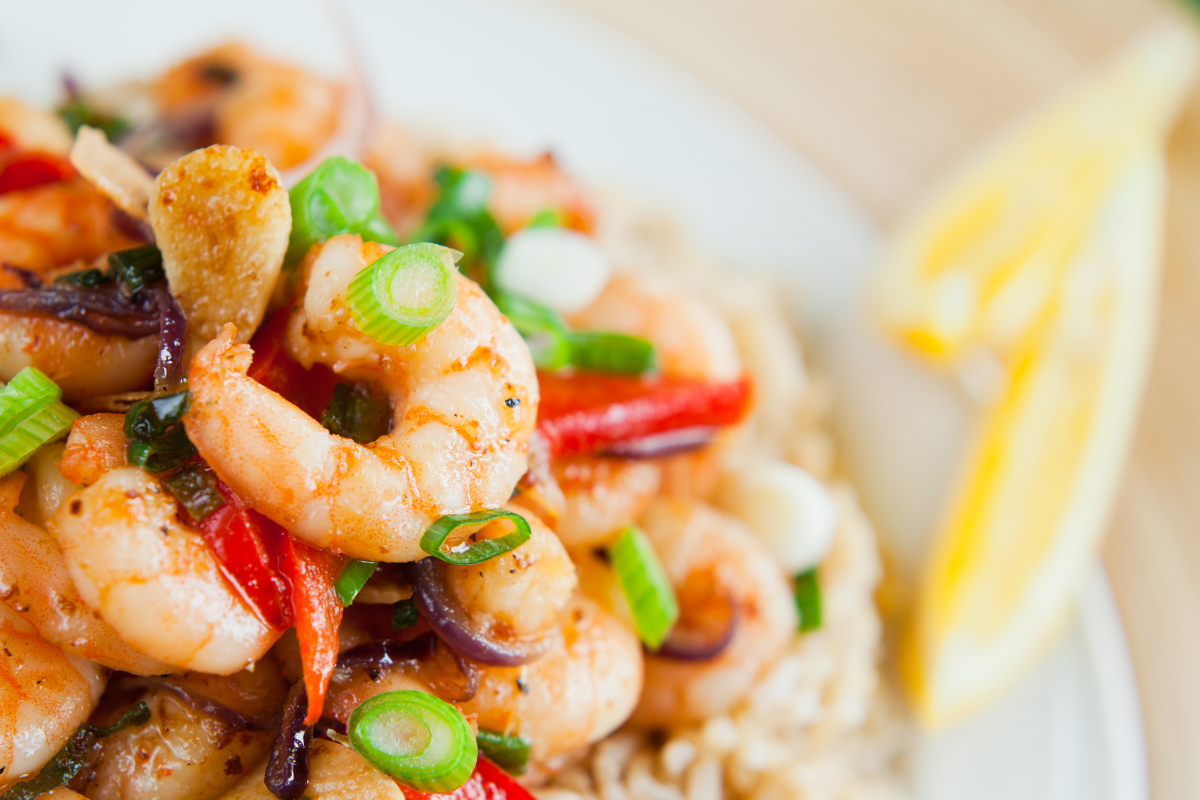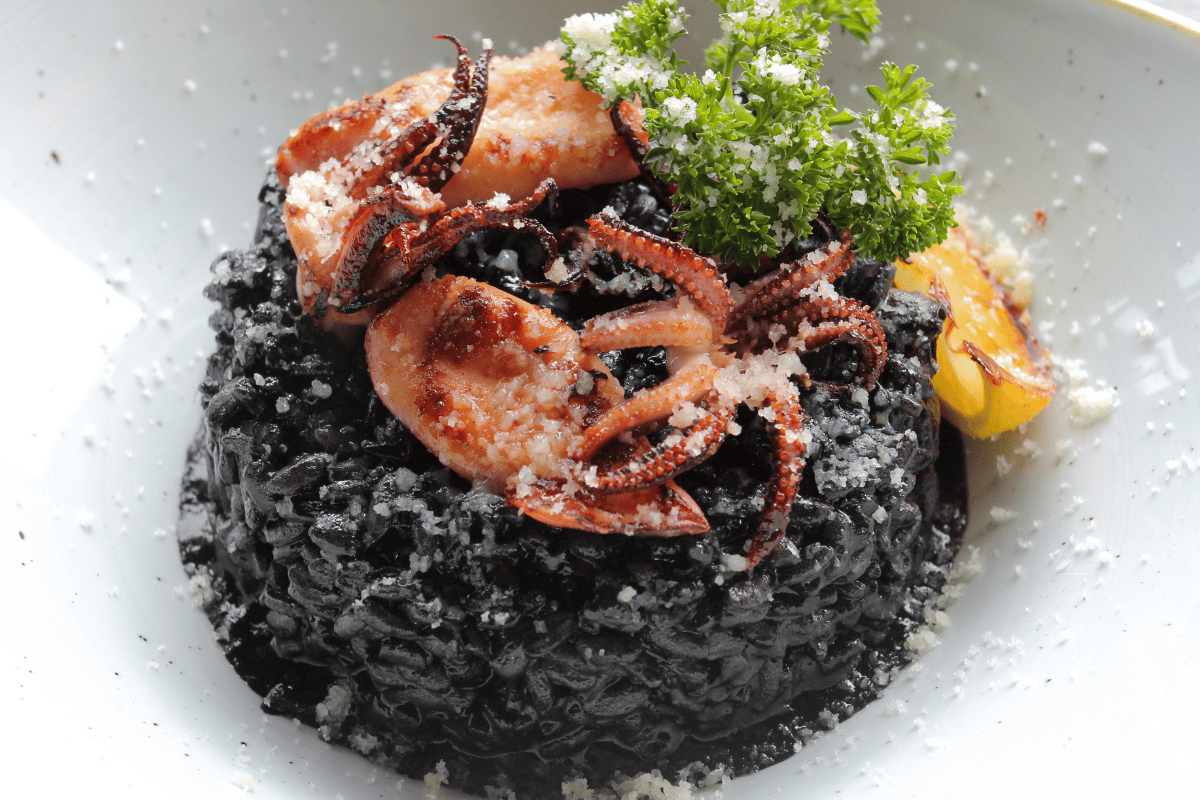
The beautiful beaches of Bahia have long been a favorite tourist destination. The area is famous for its nightlife, clear waters, and fresh seafood. In the 1970s, it became a haven for the hippie movement after Mick Jagger visited the town of Trancoso. At that time, a hotel chef developed a unique dish evocative of the region’s melting pot of cultures and tastes: black “forbidden” rice with fruits of the sea simmered in white wine, garlic, and tomato sauce. The hotel Uxua remains in operation, although the menu changes at the current chef’s whim. Luckily, the original forbidden rice recipe from Bahia is easy and quick to make at home.
What is Forbidden Rice?
Forbidden rice encompasses around twenty varieties of rice with a high content of anthocyanins, a pigment that gives certain foods a red, purple, blue, or black color. In the case of rice, the grains appear black when raw, then turn a beautiful purple when cooked. For this reason, forbidden rice is also known as black or purple rice.
Researchers have determined that black rice likely arose from a simple mutation. Viewing the color as desirable, farmers then selected the plants with this mutation for growing. No known species of wild black rice have ever been found, which confirms the theory that it arose randomly after rice cultivation was well established.
Forbidden rice produces much smaller yields than its white and brown counterparts, which makes it more expensive. Its rarity combined with perceived health effects meant it was originally reserved for only the very wealthy. In fact, when it was first cultivated in China, it was forbidden to all except the emperor and his family (hence the name).
Is Forbidden Rice Good for You?
Forbidden rice continues to be used as both a food product and medicine in China and other parts of the world. Traditional Chinese Medicine recommends it, in particular, as a tonic for seniors. Communities in Nepal incorporate it into the diet of pregnant women. But is it really better for you than white, red, or brown rice?
Black rice has fewer calories, less carbs, and higher levels of fiber and iron than other rice varieties. But the numbers are pretty close: 5 percent of your daily iron in forbidden rice vs 4 percent in brown rice, for example. So why is it still being touted as a superfood?
It may be due to the pigment in the rice itself, which exerts antioxidant properties not found in non-pigmented rice. Anthocyanins found in forbidden rice and other dark-colored foods are being studied for their anti-inflammatory, anti-cancer, and anti-obesity properties. Ongoing research supports their use in future pharmaceuticals for memory support as well.
How to Cook Black Rice
You cook forbidden rice in much the same way you would any other type of rice: you boil it with water until it is tender. Ratios vary from recipe to recipe, but we find that 2 cups of water to one cup of black rice is sufficient. We also like to toast the kernels in a little oil before boiling to give them a little bite and keep the grains from sticking together too much. This is an essential step in classic Brazilian rice as well.
What Seafood is Used for Brazilian Black Rice?
This forbidden rice recipe uses calamari and prawns, but you can use any seafood you like. Mussels would be delicious in the white wine sauce, as would clams and big hunks of buttery lobster. You can also omit the seafood entirely if you do not like it or you have an allergy. The rice on its own is a delicious side dish to almost any accompaniment, and the sauce is equally tasty on chicken and pork.
Forbidden Rice Recipe (Arroz preto com camarão e lula)
Ingredients:
1 pound shrimp or prawns, deveined (medium size is good)
1 pound small calamari, cleaned well. (Separate the arms from the rest of the body and cut that part into ¼” slices lengthways. You will use both the arms and the slices)
1 cup black rice
½ yellow onion, diced
2 cloves garlic, minced
½ cup white wine (dry not sweet)
⅓ cup tomato sauce, unseasoned
1.5 tsp salt, more to taste
Freshly ground black pepper
Extra virgin olive oil
1 oz butter, unsalted
Fresh parsley
Directions:
- In a medium saucepan, heat a drizzle of olive oil over medium heat. Add in your forbidden rice and cook for a few minutes, stirring frequently. You won’t be able to tell if it is toasted due to the dark color, but you can smell it. It will have a nutty scent. Just stir it constantly for about five minutes.
- When the rice is toasted, add in your onion and garlic and stir for a further minute or two until they are fragrant and softened.
- Add in the salt and water and bring to a boil. Reduce the heat to medium low and cover. Simmer until the water has been absorbed and the rice is tender (around 30 minutes).
- While the rice cooks, prepare your seafood. Heat a skillet over medium heat and melt half of the butter (1 tbsp). Add in your prawns and cook for a couple minutes each side until they are just pink on the outside and firm, but not tough. Season with salt and pepper.
- Transfer the cooked prawns/shrimp to a plate. Turn the heat up to medium high.
- Add in another tablespoon of butter and a drizzle of extra virgin olive oil. Fry your calamari in 2-3 batches so they cook evenly. They will finish quickly-around one minute is all they need. Be sure to flip them once while cooking.
- Remove the calamari and deglaze your hot pan with the white wine. Scrape up any bits that have stuck to the bottom of the pan.
- Stir in the tomato puree and tip the seafood into the sauce. Heat through, then pile high on a good scoop of the forbidden rice. Spoon any extra sauce over the top and garnish with fresh parsley.

